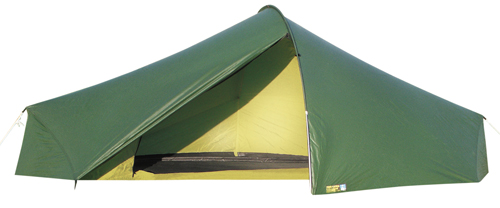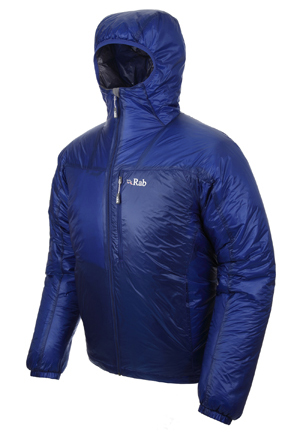We pitched tents a couple times on the course, employing a pair of ultra-light shelters from Terra Nova Equipment. The company’s Laser and Laser Competition tents are amazingly small and light, hovering less than three pounds apiece. The minimalist design includes one hoop pole, siliconized nylon fabric, and needle-like tent stakes made of titanium.

In the mountains of Tierra del Fuego, the tents shielded us from rain and snow. But they were difficult and time consuming to set up after an exhausting day of racing, requiring multiple guy points to stake out each end. Wind rattled the tent one night, whipping through ventilation ports and causing me to slink inside my sleeping bag and hide.
Apparel and outerwear may be the most key equipment on an expedition. Dissecting all I wore during the week would require paragraphs of explanation. But a couple standout items include my wool base layers and an insulated jacket from Rab.
For a week straight, I did not change shirts. Next to my skin, I wore a tight-fitting and ultra-thin wool T-shirt from Ibex Outdoor Clothing. On top of that was a long-sleeve base from I/O Bio Merino, which had a high neck and a zipper on the chest. These “second skins” never left my body during the race. The fine wool adapted across wide temperature swings. It retained warmth when wet, and it breathed when my body was hot.

The Xenon jacket from Rab, which won’t be available until next fall, was a life saver on the race. The Xenon is touted as light, warm and durable, and in my test it held up on all counts. It is an insulating piece, not a shell. I wore the Arc’teryx Alpha SL Pullover for waterproof protection, a GORE–TEX shell jacket that proved bomber in rain and snow.
For warmth, the Rab jacket employs 60 grams of Primaloft One insulation, adding enough loft to trap body heat and keep you warm in temps down near freezing. The jacket weighs only about 11 ounces, and it packs into its own chest pocket for storage. A thin face fabric on the Rab Xenon jacket called Pertex Quantum GL feels fragile to the touch. But in Patagonia, where we bushwhacked at times for miles in thick woods, the Xenon jacket never ripped. Its admirable performance keeping me warm was one small piece in the giant gear puzzle that was this race.
Another apparel piece I depend on, as readers of this column know, is the Buff. This thin, seamless headwear piece accompanies me on nearly everything I do — from training runs to weeklong races. In Patagonia, my team wore Buffs every day, switching the do-rags around as hats, balaclavas, sweatbands, and neck gaiters as the weather wildly swung and temperatures ranged from below freezing to about 60 degrees.

Of all gear items, shoes are among the most important. In Patagonia, as in many other races in recent years, I wore the Inov-8 Roclite 285s, which are lightweight and flexible shoes made for off-trail use. They have a mesh upper that breathes well but on purpose does not keep water out. You can tromp in streams and puddles and the water drains out once you’re back on dry land. The feathery shoes — they weigh about 11.8 ounces apiece in my size 13 — have minimal support, at least in a traditional sense. There is almost no padding in the midsole and scant protection for the toes. But the “barefoot style” of the shoe is something I love. It lets your foot flex and absorb the terrain. Mile after mile in the race, the shoe felt fast — and just supportive enough — to never let me down.
On the long bike sections of the race, the aforementioned Anthem X1 from Giant Bicycles was a solid ride. The cross-country legs in the race — almost 200 miles total — were mainly dirt roads. The Anthem X1 is the speediest mountain bike I have ridden. It was perfect in Patagonia, where it took in the bumps but allowed me to ride fast with almost zero bounce while pedaling.

Other cycling gear worth noting includes the Dakine Ventilator bike gloves, a helmet from Kong (see more details below in the article), wool-based bike shorts from Ibex Outdoor Clothing, and grips from Ergon. The Ergon GX2 Leichtbau Carbon grips, which cost $85 to $110 at various websites, have a flat platform area and a bar-end horn for switching grip positions. They are touted to give a rider more “hand contact with the bike,” which can increase control. The main reason I went with Ergon on this race was to minimize pressure on nerves in the hand. The company says the grip takes pressure off the ulnar nerve and keeps the hand from going numb. The theory proved true in Patagonia, where we biked for hours and hours over two days. In the Dakine gloves and on Ergon grips, my hands felt good the entire time.
continued on next page. . .








